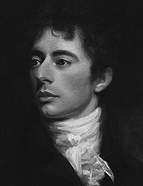

Even though he was showing signs of senility, Southey continued to state in correspondence until 1839 that he wanted to publish his monumental História de Portugal . As early as 1838, close friends and relatives began to notice the signs of his advanced age. After spending many years in depression, Edith was hospitalised with a diagnosis of dementia in October 1834. She died on 16 November 1837. Southey became engaged to the poet Caroline Bowles in 1838 and married her on 4 June 1839. In the months that followed, the signs of senility worsened, leading him to cease his previously active correspondence on 6 September 1839, due to the progression of his mental illness. He died on 21 March 1843 in Keswick, apparently from typhoid fever.
The memory of Robert Southey and his História do Brasil was undoubtedly important to the process of nation-building in Brazil in the 19th century. It became fundamental to very different historiographical projects, such as the História dos Principais Sucessos Políticos do Império do Brasil [History of the Main Political Successes of the Brazilian Empire] (1826) by José da Silva Lisboa, which emphasised the continuities between the present of the new Empire and its colonial past, and the História do Brasil (1836) by the British author John Armitage, which focused on deepening the historical distance between Brazil and Portugal after the abdication of King Pedro I. The monumentality of Southey's História do Brasil inspired Francisco Adolfo de Varnhagen to diligently search for unpublished sources in archives, which played a crucial role in the writing of his História Geral do Brasil [General History of Brazil] (1854-1857). Furthermore, the publication of the Portuguese translation of História do Brasil in 1862, which included annotations by Canon Fernandes Pinheiro, occurred within a context of heated historiographical disputes among the members of the Instituto Histórico e Geográfico Brasileiro [Brazilian Historic and Geographic Institute] (IHGB). These debates were driven by differing projects for indigenous policies to be developed by the Brazilian Empire. In this context, Brazilian literati connected to the Romantic heritage viewed Southey's work as a more agreeable interpretation of the historical dignity of indigenous peoples, in contrast to Varnhagen's highly critical assessments of the issue.
This work is financed by national funds through FCT - Foundation for Science and Technology, I.P, in the scope of the projects UIDB/04311/2020 and UIDP/04311/2020.
